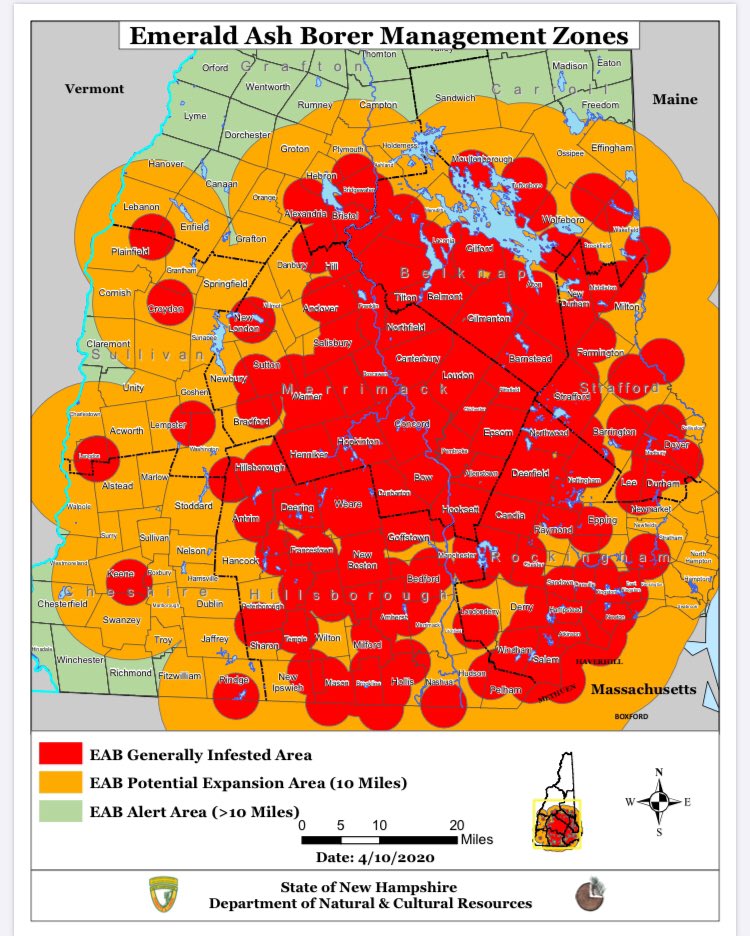Here’s a bit of good news: The National Arboretum says (article here) it has developed a strain of hemlock tree that is resistant to the wooly adelgid, a sap-sucking pest that is decimating populations of the tree throughout the Eastern Seaboard. New Hampshire has the pest – I’ve seen it on trees around me – but we’re near the northern range and it’s not too bad yet.
One reason for the insect’s power to wipe out large stands of hemlocks is its ability to reproduce parthenogenetically, or without their eggs being fertilized. This means female hemlock woolly adelgids can reproduce without males, resulting in substantial annual population increases.
Hemlocks are sometimes overlooked in forestry because they’re not worth anything on the market – lousy lumber. But they’re really important for forest ecosystems because they create a lot of shade and lower temperatures. That’s particularly an issue with small streams; if you remove all the hemlocks the water gets much warmer and certain species, such as trout, fade.
The hybrid has been growing and being tested since 2000, including on test sites in Connecticut. A plant patent has been applied for and the arboretum is looking for a company to grow and sell it.
On the flip side: Emerald ash borer continues to expand in New Hampshire. It’s now found in the southwest corner of the state.


 Return to the Concord Monitor
Return to the Concord Monitor
hemlock lumber is fine for lots of uses. there is also solid demand for hemlock pulp. not worthless; undervalued is more descriptive.
I’m not a logger/forester, but I’ve never heard a logger describe hemlock as anything but junk that’s in the way if you want a profitable cut.
The first time we harvested our timberland (around 2007) the forester discovered large stands of hemlock. It was the most profitable part of the harvest. A local mill used the trees for beams, rafters and flooring saying hemlock was sturdier than pine. The second harvest we did (last year) the hemlock was not so populous and we did not make as much money as the first time, but once again that mill sucked up all the hemlock we cut. Wish we had more this time around.
perhaps you haven’t had enough conversations with loggers, or more importantly, the right ones.
a lot of the hemlock IS poor quality; compared to white pine, it might seem like “junk”. but it has value, and both the logger and landowner can generate profit when hemlock is harvested.
You’re gonna love the post climate change world.
👏 👏 👏
Can you please cite the source article for this optimistic story? I’ve Google searched and do not find anything recent.
My apologies – I forgot to insert the link in the story. It’s there now, in the first sentence.
I’ve been a consulting forester for 40 years. A buyer telling a landowner their trees are not worth much? I haven’t heard that much more than 10,000 times. Most loggers are honest but fact is the less they pay for trees they harvest the higher their profit. Hire a forester. Have him or her sell your timber. If you are too cheap or think you are smarter than a forester at least get prices from several potential buyers.